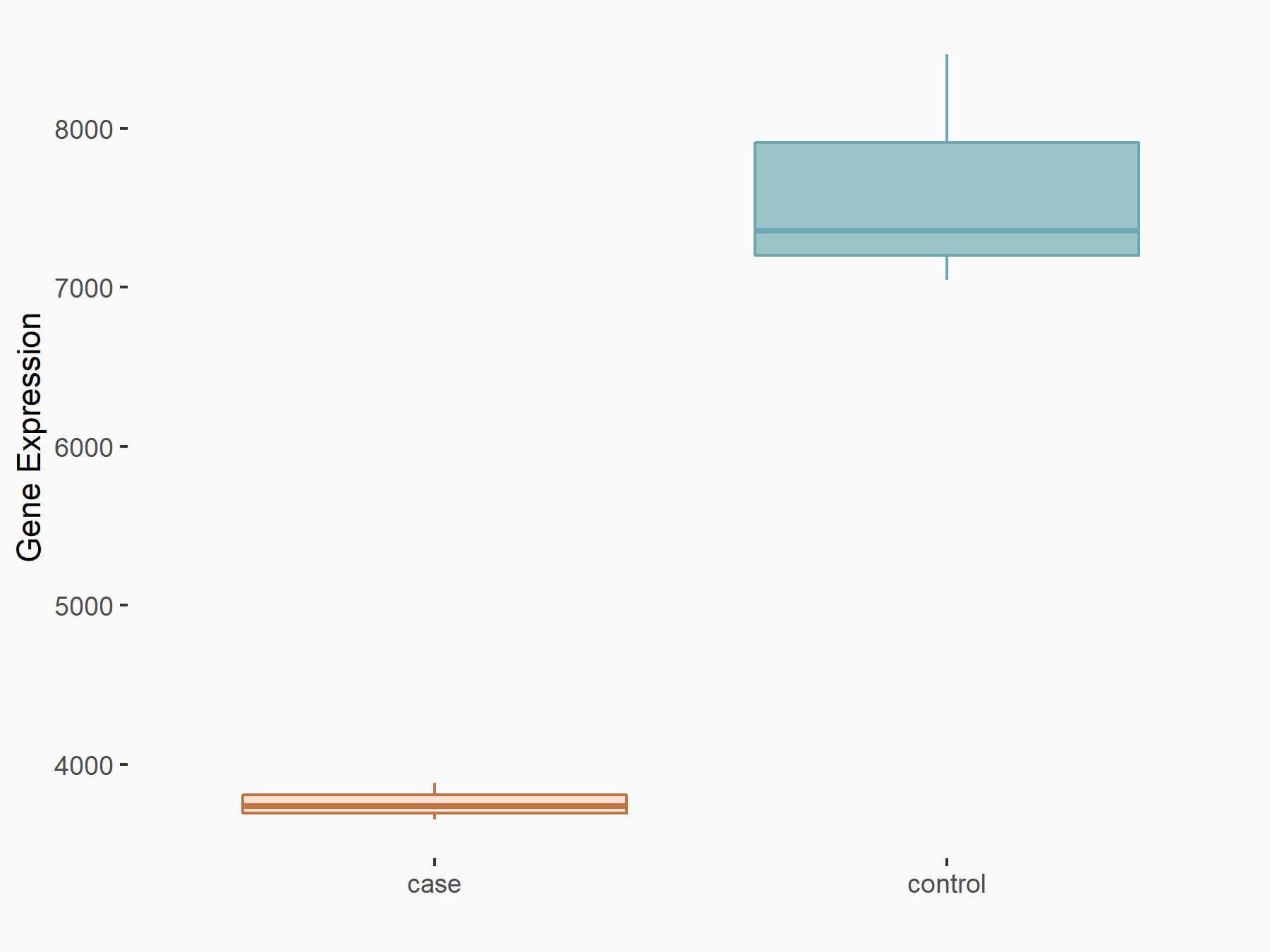m6A Target Gene Information
General Information of the m6A Target Gene (ID: M6ATAR00162)
Full List of m6A Methylation Regulator of This Target Gene and Corresponding Disease/Drug Response(s)
SLC1A5
can be regulated by the following regulator(s), and cause disease/drug response(s). You can browse detail information of regulator(s) or disease/drug response(s).
Browse Regulator
Browse Disease
Browse Drug
Fat mass and obesity-associated protein (FTO) [ERASER]
| Representative RNA-seq result indicating the expression of this target gene regulated by FTO | ||
| Cell Line | 253J cell line | Homo sapiens |
|
Treatment: siFTO 253J cells
Control: 253J cells
|
GSE150239 | |
| Regulation |
  |
logFC: -1.02E+00 p-value: 5.80E-30 |
| More Results | Click to View More RNA-seq Results | |
| In total 1 item(s) under this regulator | ||||
| Experiment 1 Reporting the m6A Methylation Regulator of This Target Gene | [1] | |||
| Response Summary | Genetic inactivation of FTO using multiple orthogonal approaches revealed that FTO inhibition selectively reduces the growth and survival of VHL-deficient cells in vitro and in vivo. Integrated analysis of transcriptome-wide m6A-seq and mRNA-seq analysis identified the glutamine transporter Neutral amino acid transporter B(0) (SLC1A5) as an FTO target that promotes metabolic reprogramming and survival of VHL-deficient ccRCC cells. GLS1 inhibitors that target mitochondrial glutaminase and the conversion of glutamine to glutamate are currently being evaluated in early-phase clinical trials in ccRCC. These findings identify FTO as a potential HIF-independent therapeutic target for the treatment of VHL-deficient renal cell carcinoma. | |||
| Target Regulation | Up regulation | |||
| Responsed Disease | Renal cell carcinoma | ICD-11: 2C90 | ||
| Responsed Drug | GLS-IN-968 | Investigative | ||
| Pathway Response | Central carbon metabolism in cancer | hsa05230 | ||
| HIF-1 signaling pathway | hsa04066 | |||
| Central carbon metabolism in cancer | hsa05230 | |||
| Metabolic pathways | hsa01100 | |||
| VEGF signaling pathway | hsa04370 | |||
| In-vitro Model | UMRC2-vec (CCRCC isogenic cell lines that are VHL-deficient) | |||
Renal cell carcinoma [ICD-11: 2C90]
| In total 1 item(s) under this disease | ||||
| Experiment 1 Reporting the m6A-centered Disease Response | [1] | |||
| Response Summary | Genetic inactivation of FTO using multiple orthogonal approaches revealed that FTO inhibition selectively reduces the growth and survival of VHL-deficient cells in vitro and in vivo. Integrated analysis of transcriptome-wide m6A-seq and mRNA-seq analysis identified the glutamine transporter Neutral amino acid transporter B(0) (SLC1A5) as an FTO target that promotes metabolic reprogramming and survival of VHL-deficient ccRCC cells. GLS1 inhibitors that target mitochondrial glutaminase and the conversion of glutamine to glutamate are currently being evaluated in early-phase clinical trials in ccRCC. These findings identify FTO as a potential HIF-independent therapeutic target for the treatment of VHL-deficient renal cell carcinoma. | |||
| Responsed Disease | Renal cell carcinoma [ICD-11: 2C90] | |||
| Target Regulator | Fat mass and obesity-associated protein (FTO) | ERASER | ||
| Target Regulation | Up regulation | |||
| Responsed Drug | GLS-IN-968 | Investigative | ||
| Pathway Response | Central carbon metabolism in cancer | hsa05230 | ||
| HIF-1 signaling pathway | hsa04066 | |||
| Central carbon metabolism in cancer | hsa05230 | |||
| Metabolic pathways | hsa01100 | |||
| VEGF signaling pathway | hsa04370 | |||
| In-vitro Model | UMRC2-vec (CCRCC isogenic cell lines that are VHL-deficient) | |||
GLS-IN-968
[Investigative]
| In total 1 item(s) under this drug | ||||
| Experiment 1 Reporting the m6A-centered Drug Response | [1] | |||
| Response Summary | Genetic inactivation of FTO using multiple orthogonal approaches revealed that FTO inhibition selectively reduces the growth and survival of VHL-deficient cells in vitro and in vivo. Integrated analysis of transcriptome-wide m6A-seq and mRNA-seq analysis identified the glutamine transporter Neutral amino acid transporter B(0) (SLC1A5) as an FTO target that promotes metabolic reprogramming and survival of VHL-deficient ccRCC cells. GLS1 inhibitors that target mitochondrial glutaminase and the conversion of glutamine to glutamate are currently being evaluated in early-phase clinical trials in ccRCC. These findings identify FTO as a potential HIF-independent therapeutic target for the treatment of VHL-deficient renal cell carcinoma. | |||
| Target Regulator | Fat mass and obesity-associated protein (FTO) | ERASER | ||
| Target Regulation | Up regulation | |||
| Responsed Disease | Renal cell carcinoma | ICD-11: 2C90 | ||
| Pathway Response | Central carbon metabolism in cancer | hsa05230 | ||
| HIF-1 signaling pathway | hsa04066 | |||
| Central carbon metabolism in cancer | hsa05230 | |||
| Metabolic pathways | hsa01100 | |||
| VEGF signaling pathway | hsa04370 | |||
| In-vitro Model | UMRC2-vec (CCRCC isogenic cell lines that are VHL-deficient) | |||